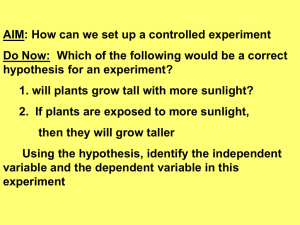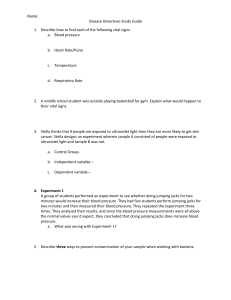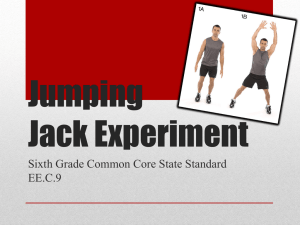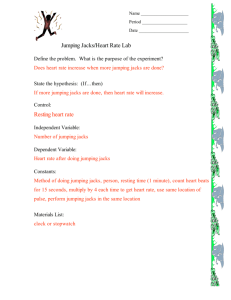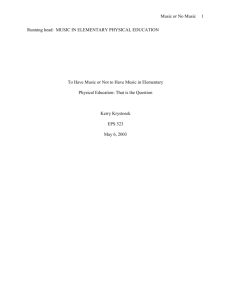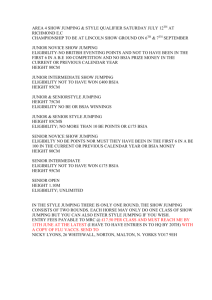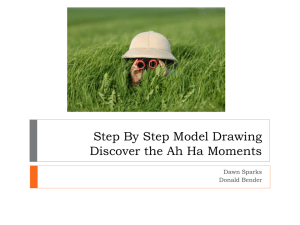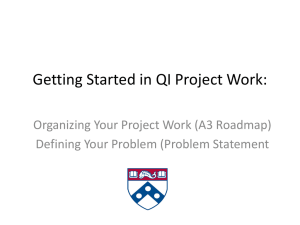Scientific Method Notes
advertisement
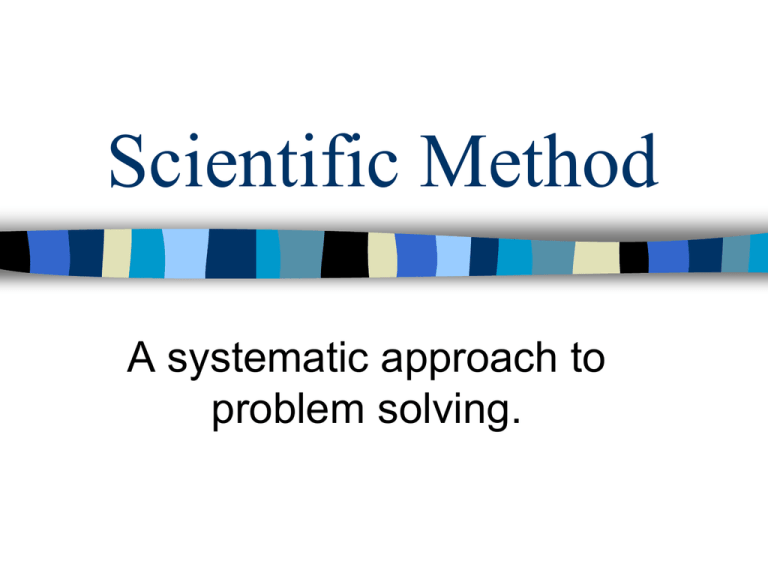
Scientific Method A systematic approach to problem solving. What is the scientific method? It is a simple method scientists use to conduct an investigation. It is a way to ask & answer scientific questions by asking questions & conducting experiments. Problem Clearly stated in QUESTION FORM – Why? – How? – What? How do Jumping Jacks affect heart rate? Information Exercise raises the heart rate in the short term Exercise causes the body to need more energy, more glucose must be broken down and processed into usable energy for cells More intense exercise causes the need for more oxygen, more quickly. To keep up the heart pumps blood faster, resulting in a higher heart rate. Information What factors affect the problem Observations- things that you can see, hear, smell, taste, or feel – Ex. Workouts include jumping jacks Inferences- conclusion based on your observations – Ex. Jumping jacks are a good form of exercise Hypothesis Educated guess prediction Use If, then statements – If ____ [I do this], then _____ [this will happen] If students complete jumping jacks, then their heart rate will rise. Experiment Tests your hypothesis. Independent Variable- what the experimenter changes Dependent Variable- what you measure (the response to the change) Constants- things that stay the SAME Control group- group used for comparison Experimental Group- group that the IV is applied to Experimental Procedure 1. 2. 3. 4. Measure your resting heart rate and record the number of beats per minute. Group 1 will complete one minute of jumping jacks. Group 2 will sit in their seats for one minute. Both groups will immediately measure their heart rate and record the number of beats per minute. Each group will calculate their change in heart rate. Calculate your change in heart rate (Heart rate after 1 minute) – (Resting Heart Rate) Experiment EXAMPLE Independent Variable- no jumping jacks vs. jumping jacks Dependent Variable- change heart rate Constants- same person, same method of taking heart rate, same amount of time Control group- not completing jumping jacks Experimental Group- completing jumping jacks Data Numerical Observations Arranged in tables and graphs Group Heart Rate (beats per minute) No Jumping Jacks 100 Jumping Jacks 60 Data V. Conclusion Analyze the data – Do you accept or reject your hypothesis? Evaluate the research What next?? If you reject your hypothesis (not supported), you modify your hypothesis and complete the experiment again! If you accept your hypothesis (supported), you REPEAT the experiment several times to gather more data Jumping for Joy How did we do? What should we do next? What further research could we complete? (Ex. Other forms of exercise?) REMEMBER THESE STEPS! PEOPLE IN HERSHEY EAT DARK CHOCOLATE Problem Information Hypothesis Experiment Data Conclusions
